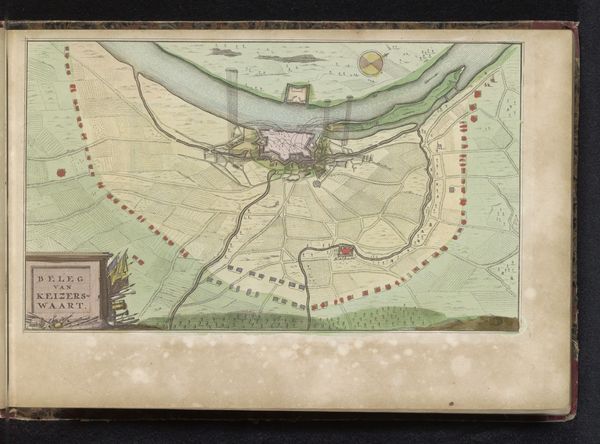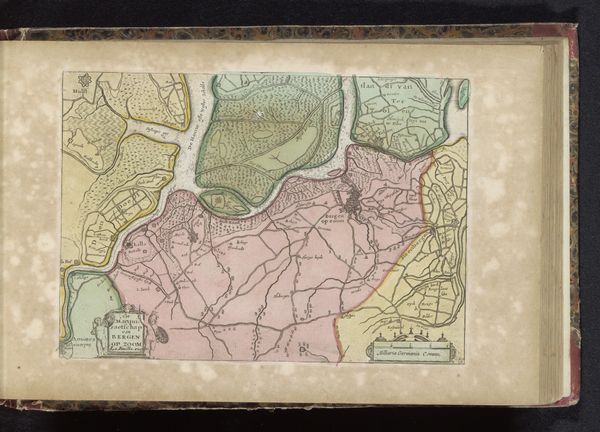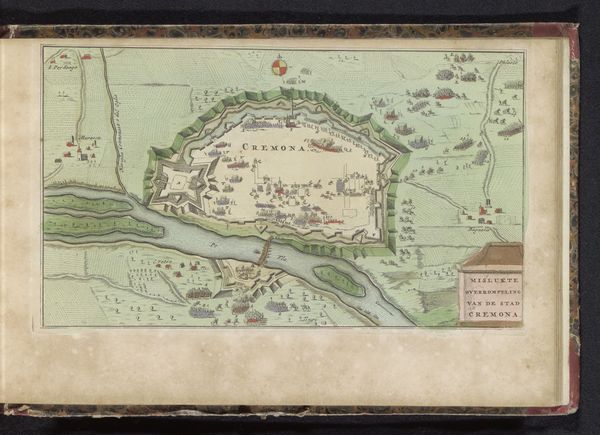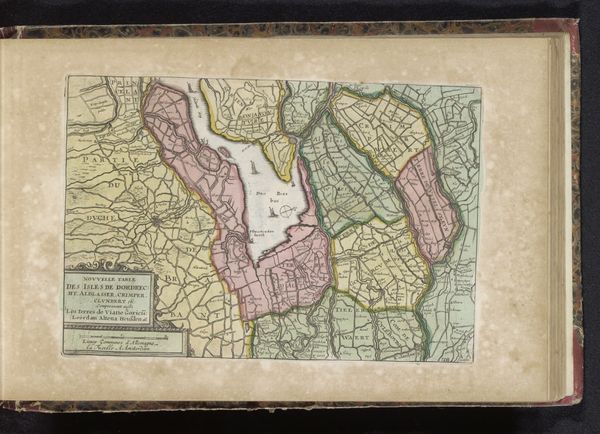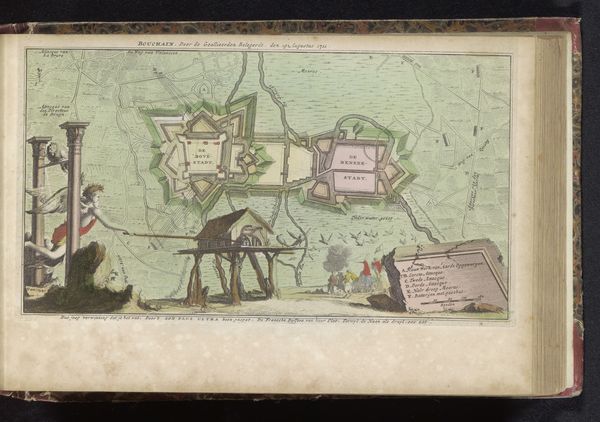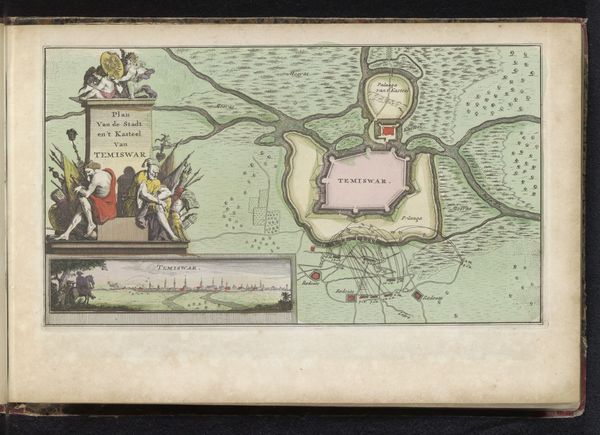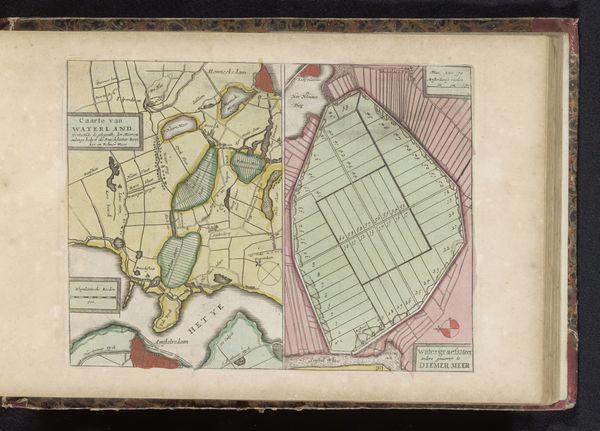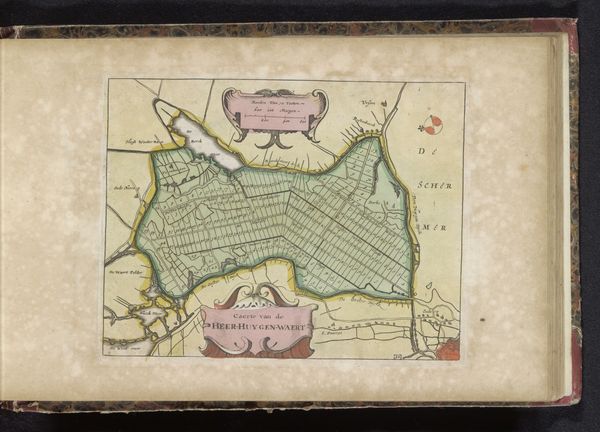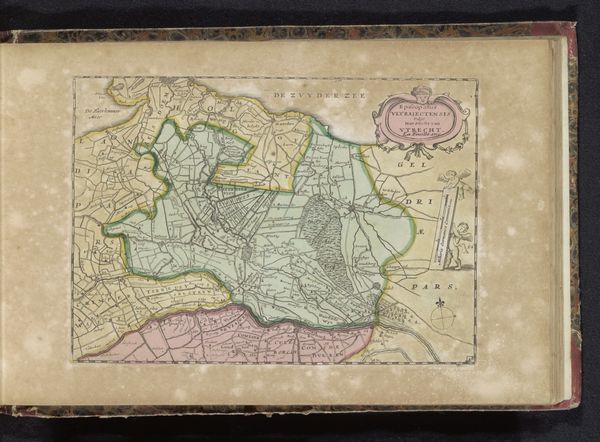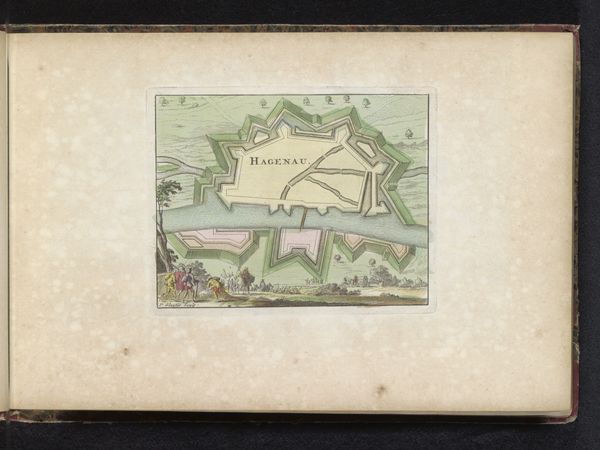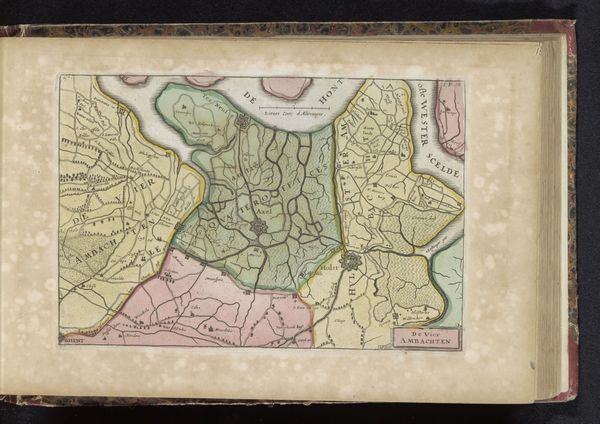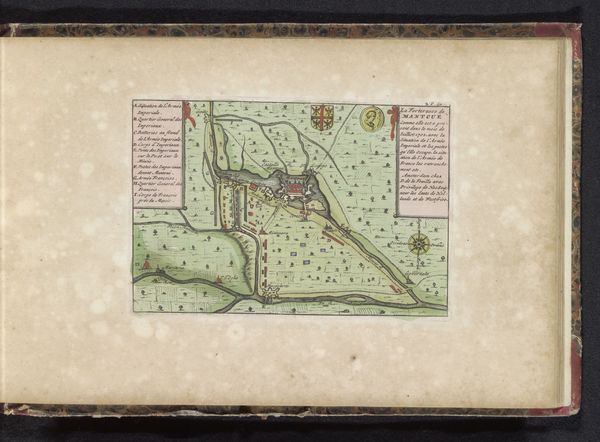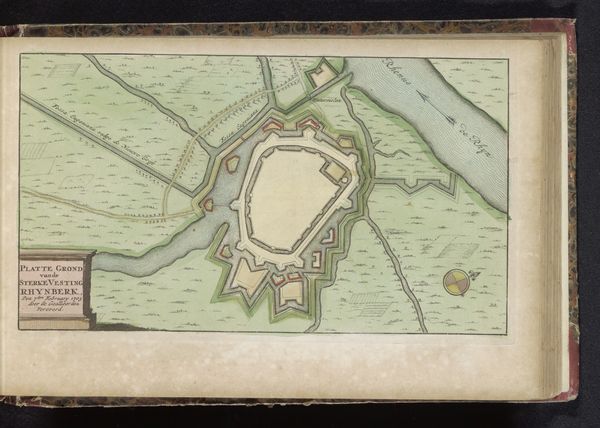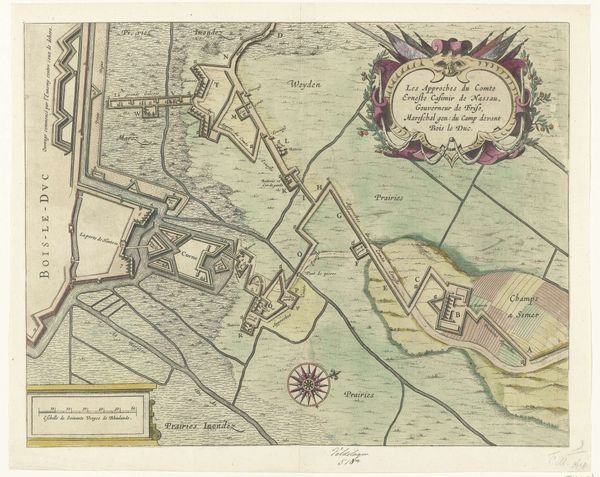
drawing, print
#
drawing
# print
#
coloured pencil
#
cityscape
#
history-painting
Dimensions: height 170 mm, width 280 mm
Copyright: Rijks Museum: Open Domain
Curator: Welcome. Here we have “Beleg van Bonn, 1703,” a drawing and print believed to have been created sometime between 1700 and 1735 by an anonymous artist. Editor: The image certainly evokes a feeling of… order, even sterility. There's an almost clinical detachment in its depiction of space and form. The color palette, too, seems muted, perhaps intentionally so. Curator: Indeed. As a formal piece, consider how line dominates the construction. The careful rendering, devoid of atmospheric effects, encourages our eye to precisely follow each fortification, each parcel of land. Notice the geometric structures used to define areas. The negative space, even, becomes just another bounded form. Editor: Yet despite the cartographic precision, I can’t ignore how this rendering symbolizes power and dominion. The cityscape becomes a symbol of control, and the map itself, a symbolic act of ownership. Even the river acts as a border, a divider between opposing forces, both practically and symbolically. The dotted line is very imposing too. Curator: A compelling interpretation. Structurally, that bold, dotted perimeter encloses the city while also implying something of a dynamic, potentially unstable system. Visually, it segments space with the river as the border running horizontally to visually unify. Editor: Perhaps it speaks to a desire for permanence. The symbols on this piece denote strategic locations or features. One sees “Fort de Bourgogne," a title. Yet, on another level, it transcends specific locations, functioning as a collective representation of military power and spatial awareness. Curator: Interesting point. I observe the way the varied techniques create a sense of space in their organization on the paper. Editor: The river, a winding constant, evokes a kind of resilience—a force flowing through history itself. Water is vital. The depiction has to remind the viewer of how essential its supply to the success or failure of a seige. Curator: I see, now, what you were suggesting in the map's initial sense of sterility. A complex history distilled into pure informational presentation, with the composition dictating visual pathways throughout. Editor: It’s more than a map; it's an ideological landscape made manifest in ink and pigment, revealing much about how conflict, order, and space are understood. The work holds up under scrutiny by varied viewpoints.
Comments
No comments
Be the first to comment and join the conversation on the ultimate creative platform.
